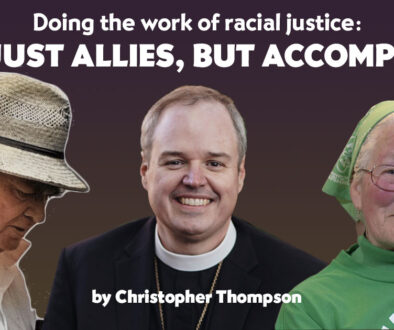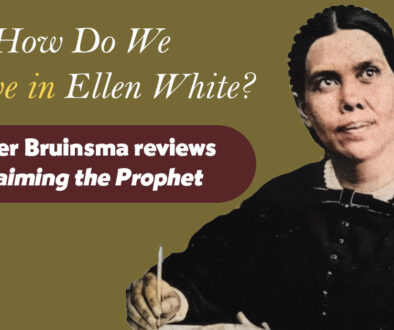North American Adventist and Roman Catholic Church Facing Similar Problems
by Erv Taylor
Under the headline, “Competing Conferences Show Division Among U.S. Catholics,” a news story appearing in the Detroit Free Press reported that, over the weekend of June 11-12, 2011, Catholic liberals met in Detroit, Michigan. At the same time, a few miles away, Catholic traditionalists held their own series of meetings. Unlike the liberals, the conservatives will be coming together with the support and blessing of the local Catholic archbishop who had warned local deacons and priests to stay away from the meeting of liberals. He was quoted as saying that any member of the clergy attending would be in danger of being defrocked.
The Pew Forum on Religion and Public Life in 2008 reported that about a third of those raised Catholic in the U.S. have left the church. The exposure of the long term abuse of children by Catholic priests has had grave consequences for a number of Catholic parishes and dioceses, including many being either actually bankrupt or close to bankruptcy. In the eyes of many Catholic laymen, the credibility of the Catholic hierarchy in the U.S. has never been lower. A number of Catholic intellectuals are aware that many traditional teachings of the Catholic Church are a product of issues of importance to European Medieval Christianity and having little relevance to the modern world.
Catholic liberals and conservatives agree that their church has many problems. Both agree that at the heart of the problem is the question of what it means to be Catholic in the 21st Century. They agree on the nature of many of the problems. What they can’t agree on are the solutions.
The liberal Catholic meeting in downtown Detroit is being sponsored by the American Catholic Council, a coordinating organization of 30 Catholic reform groups from across the U.S. The Council is asking for more democratic decision-making in the Catholic Church, as well as allowing women into the priesthood and a married priesthood. They insist their church needs to change to survive as a viable institution in 21st Century America.
The conservatives are meeting with the sponsorship of the Archdiocese of Detroit in Detroit suburb. Their agenda includes a critique the American Catholic Council agenda and the presentation of the official, sanctioned views of the church. A conservative spokesperson involved in the organization of the meeting of traditional Catholics was quoted as saying, “the liberals want the Catholic Church to change. But truth doesn’t change.”
The Roman Catholic tradition is more than a thousand years old while the Adventist denomination has been in existence less than two centuries. On the surface, it might appear these two vastly different institutions would have no problem in common. While their histories are obviously not similar and a number of the specific issues that exist may indeed be vastly different, surprisingly many problems currently manifesting themselves in American Catholic circles is also increasingly plaguing the North American Adventist Church.
Divisions within Adventism rarely get much coverage from the secular press because Adventist membership in North America is between one and two percent of that of American Catholicism and Adventism’s public image and name recognition is relatively low except around three or four of our major medical institutions. In addition, Adventism is widely confused with Mormonism and the Jehovah Witnesses Watchtower Society in the general public consciousness.
Within official Adventism, the problems are either ignored or covered over. As would be expected, the institutional Adventist press, led by the house journal of the Adventist General Conference, the Adventist Review, only publishes materials supporting the official understanding that all problems will be solved if we could return to the days when members did not question the God-ordained leadership and accepted without question the conventional Adventist understanding of the Bible as stipulated in the writings of Ellen G. White.
According to the new regime in place in Silver Spring, all that is needed is a reformation and revival which will return the church to what were supposed to be the “old landmarks.” In truth, these are traditions which were accepted without question before Prophetess of Health unmasked where Ellen White really obtained many of her health-related ideas. These were traditions which were accepted before The White Lie provided chapter and verse about where Ellen White and her “helpers” copied much material and then introduced with “I was shown…” in the prophetess’ inspired writings. Other traditions were accepted before the discovery in 1975 of an 1845 newspaper article describing events transpiring in the house of one Israel Dammon and what one young lady by the name of Ellen Harmon was doing and saying in that house were discovered and published. This was also before increasingly scientifically educated members discovered that the evidence provided by apologists such as George McCredy Price and his successors at the Geoscience Research Institute, in their attempts to salvage Adventism’s adherence to a fundamentalist young life creationism, were doing it with scientifically untenable arguments.
The specific issues are different but the spirit that animates conservative traditionalists and liberals in both faith traditions are very similar. Several years ago, the Los Angeles Times published letters received from traditional Catholics responding to an article entitled “Faithful, Yet Not Traditional Catholics.” One letter read: “For someone to reject the core beliefs of an organization yet claim to be part of that organization flies in the face of logic, reason and common sense…If people want to call themselves Catholics, they are obliged to accept the teachings and the authority of the church. If they want to leave the church, there is nothing to stop them. But if they leave, they’re no longer Catholics and should not identify themselves as such.” The second letter writer comments “The individuals described in the Times’ article defiantly invent a right to select whichever theological principles to accept or reject. To what are they being faithful? If they have the power to ignore certain doctrinal precepts of the church, then which ones should be followed? These breakaway Catholics argue that the church is not inclusive enough. This is merely code for the concept that the church will not change its doctrine to suit their ego-driven behavior. Without standards, the church is nothing more than a social fraternity…” If one substituted “Adventists” for “Catholics,” in these letters and changed not one other word, Adventist traditionalists would fully and completely resonate with all of the views expressed.
On the surface, Roman Catholic and Adventist clerical administrative authorities may appear to have few problems in common. On the contrary, many of their problems are very similar. An example: How to keep an educated membership in an open society from increasing their influence and raising so many questions about the validity of traditional theology and polity that the ability of the institutional church to influence opinions and continue to receive income from members will be severely damaged. This is probably relatively simple to deal with in most Third World environments. In the First World, the strains created by this process can be easily seen.



